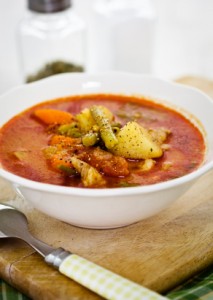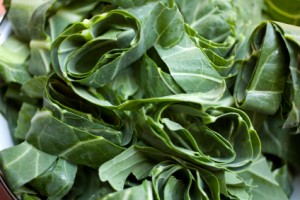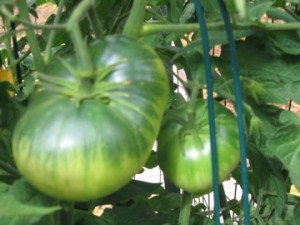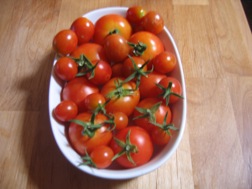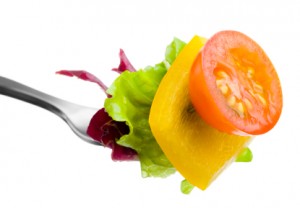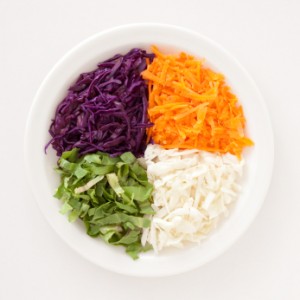 This fall, the Farmers Market is full of organic root vegetables, cabbage and winter greens. They may seem heavier than the lighter summer greens, tomatoes and squash, but they can come together in an easy stir fry. This is a dish that has some basic types of ingredients that you can mix for a recipe. Shredded meat (or not for vegetarian), shredded cabbage, grated root vegetables (like carrots or daikon radish) and slices of greens. You can add other vegetables such as broccoli, snow peas or bell peppers. Here are some tips to prepare your ingredients at the beginning of the week so that it is easier to cook each meal.
This fall, the Farmers Market is full of organic root vegetables, cabbage and winter greens. They may seem heavier than the lighter summer greens, tomatoes and squash, but they can come together in an easy stir fry. This is a dish that has some basic types of ingredients that you can mix for a recipe. Shredded meat (or not for vegetarian), shredded cabbage, grated root vegetables (like carrots or daikon radish) and slices of greens. You can add other vegetables such as broccoli, snow peas or bell peppers. Here are some tips to prepare your ingredients at the beginning of the week so that it is easier to cook each meal.
TIPS
CABBAGE- Cut the core out of the cabbage and cut into quarters. If you have a food processor, add the shredding blade and run the four (or smaller) pieces through. You can also slice thinly with a sharp knife. Store in a container in your refrigerator and make coleslaw, stir fry or side dishes all week.
CARROTS- Some of the carrots are large and can be overwhelming to peel and prepare for a quick meal. I take four large carrots, peel them and then run through the grating blade of the food processor. You can also use a hand grater. Store in a container and add to salads, stir fry, coleslaw or make a carrot salad.
CHICKEN- Roast a chicken over the weekend and shred to use throughout the week. You can also buy split chicken breasts with skin and bone to roast in the oven. It keeps the meat more moist and is easy to shred. Use for sandwiches, stir fry, tacos or a pot pie.
Fall Stir Fry
Make enough to eat in that meal. Stir fry is better fresh. There are ingredients that are not local such as sesame oil and ginger, but you can purchase organic ginger in a small quantity to reduce your costs. I do not measure stir fry ingredients in cups so these are approximate.
2 cups shredded chicken
1 cup shredded organic cabbage
1/2 cup grated organic carrots
1 grated daikon radish
4 green onions, diced
1″ piece of organic ginger, cut into matchsticks or grated
toasted sesame oil
2 cloves of garlic, diced
1 lime
1 or 2 small chiles or red pepper flake to your level of heat
kosher salt and black pepper
Bragg’s Liquid Amino Acid (instead of soy sauce)
1 bunch of organic swiss chard, sliced thinly
In a hot pan, add a little almond oil (or olive oil) with the cooked chicken, cabbage, daikon radish and carrots. Salt and pepper. Let cook for a few minutes. Add the ginger, onions, garlic, lime juice, diced chile and a little bit of toasted sesame oil. This will only need a few minutes to create the flavor and you can stir during this time. Add a little Bragg’s and then the swiss chard over the top. It will look like a lot, but will cook down. Add a little water over the top and cover halfway with a lid to help the wilting process of the greens. Enjoy.
Amy Hetager, Local Organic Meals on a Budget Blogger

